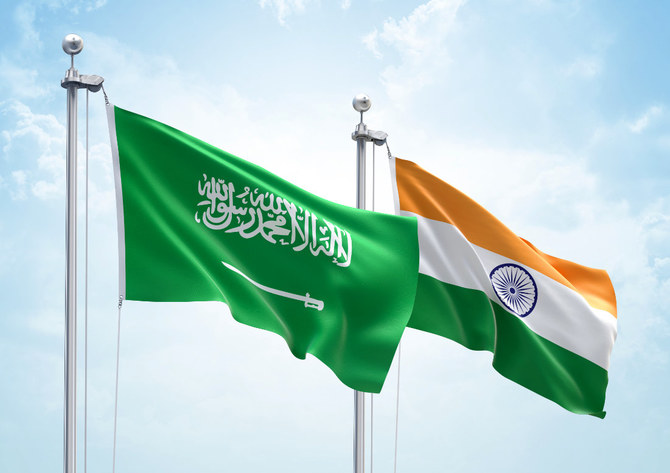Talmiz Ahmad
Saudi Crown Prince Mohammed bin Salman undertook a state visit to India on Sept. 11, the day after the successful conclusion of the G20 summit in New Delhi. The visit affirmed the close ties between the two countries, which have been personally spearheaded since 2016 by the crown prince and Indian Prime Minister Narendra Modi.
During the crown prince’s visit, the first meeting of the India-Saudi Arabia Strategic Partnership Council, headed by the two leaders, reviewed with satisfaction the state of bilateral political and economic relations. Not surprisingly, their joint statement noted the recent progress in naval cooperation and prioritized maritime security as being of crucial interest to the two countries.
India is the premier Indian Ocean nation in terms of economic size, political weight and geostrategic location. It has the same concerns as other littoral nations, namely, piracy, terrorism, human, drugs and arms trafficking, and disaster management. In recent years, India’s security concerns have increased exponentially due to what it sees as an expanding Chinese presence in the Indian Ocean through Beijing’s economic engagements, construction of ports, the setting up of a naval base at Djibouti and the increasing deployment of its navy. New Delhi views the maritime segment of the Belt and Road Initiative as an integral part of this enterprise.
For the US and its allies, the Indo-Pacific is the principal area of security concern due to China’s aggressive assertions of its interests in the Pacific Ocean, which challenge America’s interests. To confront China, Washington has shaped the Quadrilateral Security Dialogue, known as the Quad, which is a coalition of the US, Japan, Australia and India. From 2017 to 2020, the principal focus of the Quad was on security matters.
However, a course correction was effected at the in-person summit in Washington in September 2021. The security element in the Quad was diluted and was replaced by a focus on cooperation in areas of long-term interest, such as the COVID-19 vaccine initiative, a cybersecurity initiative, a clean-hydrogen partnership and a semiconductor supply chain initiative. This was perhaps done at India’s behest to play down the Quad as a security grouping directed at China while the confrontation at the Sino-Indian border from 2020 was persisting.
While India has security concerns relating to China due to tensions at their undemarcated 3,800-km border and China’s expanding footprint in South Asia and the Indian Ocean, its interests lie in minimizing the sources of friction with its northern neighbor. So, membership of a security alignment that is overtly directed at China does not serve India’s interests.
More importantly, in terms of its strategic concerns, India prioritizes the Indian Ocean over the Indo-Pacific. The former is crucial for its energy, trade, investment and logistical connectivity interests and as the home of its 8 million-strong expatriate community. These interests compel India to prioritize regional stability and the security of the sea lanes, including the chokepoints of the Strait of Hormuz, the Bab Al-Mandab Strait and the Suez Canal.
But India has traditionally had no interest in joining formal security alliances; instead, it cherishes strategic autonomy and seeks a multipolar world order with itself as one of the major poles. This approach is shared widely among the Indian Ocean littoral states, with most nations having shown no interest in joining a US-led security cabal against China. Almost all the states in the Middle East support the emergence of a multipolar global order in which each of them exercises strategic autonomy and pursues their own interests and concerns.
They espouse multialignment, in which states form overlapping relationships with several major states, particularly middle powers. This pursuit of multialignment has led to “minilaterals,” which have been defined by the Observer Research Foundation’s Rajeswari Pillai Rajagopalan as “informal, more targeted, interest-based groupings (that work) on contentious issues that are difficult to resolve in larger forums.”
India has been a major actor in this regard. While its membership of the Quad has received the most attention, New Delhi is also an active member of such diverse groupings as BRICS and the Shanghai Cooperation Organisation. It is also a partner in minilaterals in the Indo-Pacific, such as the Australia-Japan-India trilateral that, in April 2021, launched the “Supply Chain Resilience Initiative” and the India-Australia-Indonesia trilateral that focuses on development assistance programs and maritime security issues. In the Middle East, India is part of the I2U2 that also includes the US, Israel and the UAE and which promotes economic cooperation among its members.
As the region’s principal energy, trade and finance center and having long coastlines on the Gulf and the Red Sea, Saudi Arabia shares India’s concerns relating to maritime security, even as it asserts strategic autonomy in its foreign engagements. This has helped promote defense ties between India and Saudi Arabia, which have progressed dramatically since the memorandum of understanding on defense cooperation was signed in 2014. There have been regular exchanges of visits by service chiefs, dialogue on defense issues, expanded training programs and joint naval exercises — the Al-Mohed Al-Hindi exercises in Gulf waters in August 2021 and May 2023 promoted interoperability between the two navies.
It is against this background that the latest Indo-Saudi joint statement highlighted the shared concerns of the two countries in “the security and safety of waterways and freedom of navigation” in the Arabian Sea, the Gulf, the Gulf of Aden and the Red Sea. This strategically important maritime space needs deeper bilateral maritime cooperation between India and Saudi Arabia and possibly a new regional minilateral to be promoted by them.







